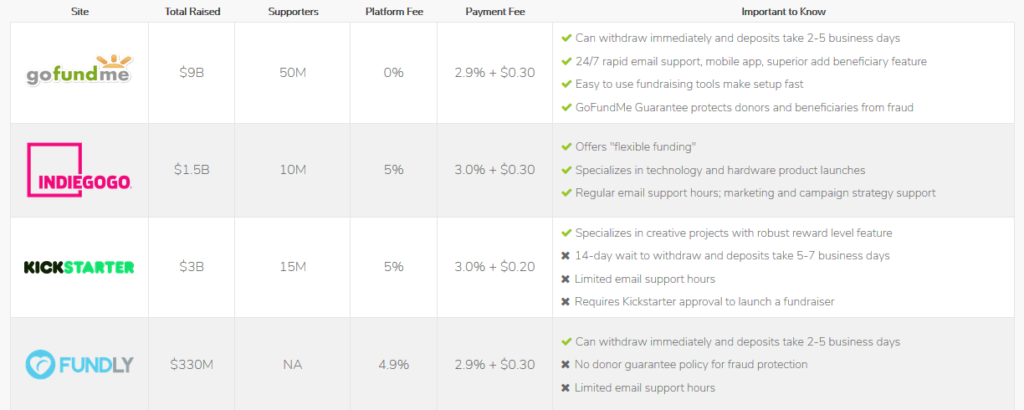
This article gives you some tips on how to approach the idea of funding your own independent game project by using the amazing power of community and crowdfunding. Article is based on a workshop held by Tommaso De Benetti for Living Game Intelligence Network on 15th of April 2021.
Authors: Ria Gynther & Suvi Kiviniemi
What to expect from a crowdfunding campaign?
Firstly, it is good to understand that crowdfunding is not just about collecting money. It’s just as much about attracting attention and gaining visibility. Crowdfunding in a nutshell is collecting small amounts of money from large numbers of different people. This is usually done via some sort of online platform, such as Kickstarter. (De Benetti 2021; Ministry of Finance 2016.)
Tommaso De Benetti (2021) has experience in running Kickstarter campaigns for tabletop RPG, board game and video game projects and analyzing campaigns made by others. He also runs an online academy (WritingBold) helping companies utilize crowdfunding and shares his research on different campaigns on WritingBold Academy YouTube channel (Video 1) and blog. (WritingBold 2021; WritingBold Academy 2021.) De Benetti’s advice to companies considering a crowdfunding campaign is to treat it as a marketing campaign rather than a funding round. (De Benetti 2021.)
Video 1. Excamble of a Kickstarter crowdfunding campaign analysis by Tommaso De Benetti. (WritingBold Academy 2020)
If you’re considering running a crowdfunding campaign, you should remember that it takes a lot of time and resources, especially so if the campaign ends successfully. Alongside setting up and running the campaign itself, you need to invest time in communication. After the campaign and its marketing efforts are over, your work is only beginning. While delivering on the promises given during the campaign (i.e. making the game), you need to keep your backers convinced that you’re using their money wisely. They expect and deserve regular updates on the spending of the money and your progress. (De Benetti 2021.)
There are a lot of different platform options for crowdfunding. It is essential that you choose a platform that suits your needs. They differ in reputation, prizing, campaign types, size of the audience (supporters) and services they offer. Some examples are listed in Image 1.

Image 1. Comparison of few different crowdfunding platforms. (Crowdfunding 2019)
Common pitfalls and how to avoid them
Crowdfunding is a good way to collect a part of the funding the team needs while gaining more attention from possible buyers. Sure, you can request hundreds of thousands, even millions, but for that you need a known IP and well established fanbase. So, pitfall number one is thinking that crowdfunding will be all you need. (De Benetti 2021.)
For a successful campaign you either need a lot of marketing or an existing fanbase, or ideally, both. But as this is crowdfunding, you need the crowd. In Kickstarter there are a huge amount of people backing different projects, but there is also a huge amount of different, interesting projects to back. You need to stand out somehow or direct your fanbase directly to your campaign page by using different marketing methods and channels. And these are not built in a day or two. (De Benetti 2021.)
The cornerstone of effective marketing efforts is to understand your target audience and their motivations extremely well. You need to know who they are, where they are, and why they are interested in your project. This will enable you to find them, and to talk to them in a way they find interesting. Don’t assume them to like your game for the same reasons you do. It is wise to do some practical market testing both with your game and your marketing messages before committing to the huge effort a crowdfunding campaign is (Image 2).
![Flow chart with key questions to think when thinking of crowdfunding: Do you have a following already? Will a fraction of them donating money be enough to reach your goal? Do you have clear picture of your target audience? Are you willing to put in months work?]](https://www.labopen.fi/wp-content/uploads/2021/06/funding-flowchart-frame-6-002-1024x565.jpg)
Image 2: Instructions for companies when thinking of crowdfunding as a funding option for their game project. (Kiviniemi 2021, 2)
One simple mistake to make is not to understand the backers side. Best way to understand what people backing projects are expecting is to support a crowdfunding project yourself. This way you’ll experience how important it is to receive updates and hear from the project’s development. (De Benetti 2021.)
Learn from others
There is a lot of information available online on how to execute a crowdfunding campaign; seek advice from them also. All the major crowdfunding platforms have some type of instructions on how to structure a successful campaign. Even if you can’t use Kicstarter, you can learn from them through their Kickstarter Creator Tips for Games -instruction (Kickstarter 2021) and resources page. Same goes for Mesenaatti.me (2021); they have good Instructions for crowdfunding campaigns. Indiegogo doesn’t share their instructions without registering, but you might find some useful tips from their Crowdfunding Field Guide (Indiegogo 2021).
All in all, running a crowdfunding campaign is a big commitment. Do your research, prepare well, and be sure to have enough resources (time and money) to run both the campaign and the work after it. A successful campaign won’t come easy, but it can be a great way to strengthen both your fanbase and your financial situation. Take your time, and best of luck!
References
De Benetti, T. 2021. About Crowdfunding. Presentation given at LGIN education event on 15th of April 2021.
Indiegogo. 2021. Choose the crowdfunding partner that’s with you at every step. [Cited 17 June 2021]. Available at: https://entrepreneur.indiegogo.com/how-it-works/indiegogo-vs-kickstarter/?utm_campaign=iggvsks&utm_content=howitworks&utm_medium=howitworks&utm_source=igg
Kickstarter. 2021. Kickstarter Creator Tips: Games. [Cited 17 June 2021]. Available at: https://www.kickstarter.com/creators/games?ref=section-creators-newsitem-creator-tips-games
Mesenaatti.me. 2021. Instructions. [Cited 17 June 2021]. Available at: https://mesenaatti.me/en/info/ohjeet2/
Ministry of Finance. 2016. Why is the Crowdfunding Act needed? [Cited 18 June 2021]. Available at: https://vm.fi/en/-/why-is-the-crowdfunding-act-needed-
WritingBold. 2021. Home. [Cited 18 June 2021]. Available at: https://www.writingbold.com/
WritingBold Academy. 2021. Videos. YouTube. [Cited 18 June 2021]. Available at: https://www.youtube.com/channel/UC1NRt39LdCBd9X1uR75ZY9A/videos
Images
Crowdfunding. 2019. Compare Crowdfunding Platforms By Type. [Cited 14 June 2021]. Available at: https://www.crowdfunding.com
Kiviniemi, S. 2021. Funding Flowchart for game startups in Finland. 2. [Cited 14 June 2021]. Available at: http://urn.fi/URN:ISBN:978-952-328-295-7
Video
WritingBold Academy. 2020. Kickstarter Campaign Analysis – Dark Souls The Board Game. YouTube. Cited 21 June 2021]. Available at: https://www.youtube.com/watch?v=Lan224ternY&t=144s
Authors
Ria Gynther works as an RDI Specialist in Baltic Explorers -project at LAB University of Applied Sciences. She’s also the Vice-Chairperson of IGDA Finland.
Suvi Kiviniemi is a project specialist at Metropolia University of Applied Sciences, in game industry related projects. She runs the Living Game Intelligence Network, a support and mentoring network for game companies.
Illustration: https://www.pexels.com/fi-fi/kuva/hiekka-juomalasi-lapinakyva-rikas-4386235/ (CC0)
Published 23.6.2021
Reference to this article
Gynther, R. & Kiviniemi, S. 2021. Crowdfunding tips for game companies. LAB Pro. [Cited and date of citation]. Available at: https://www.labopen.fi/lab-pro/crowdfunding-tips-for-game-companies/






